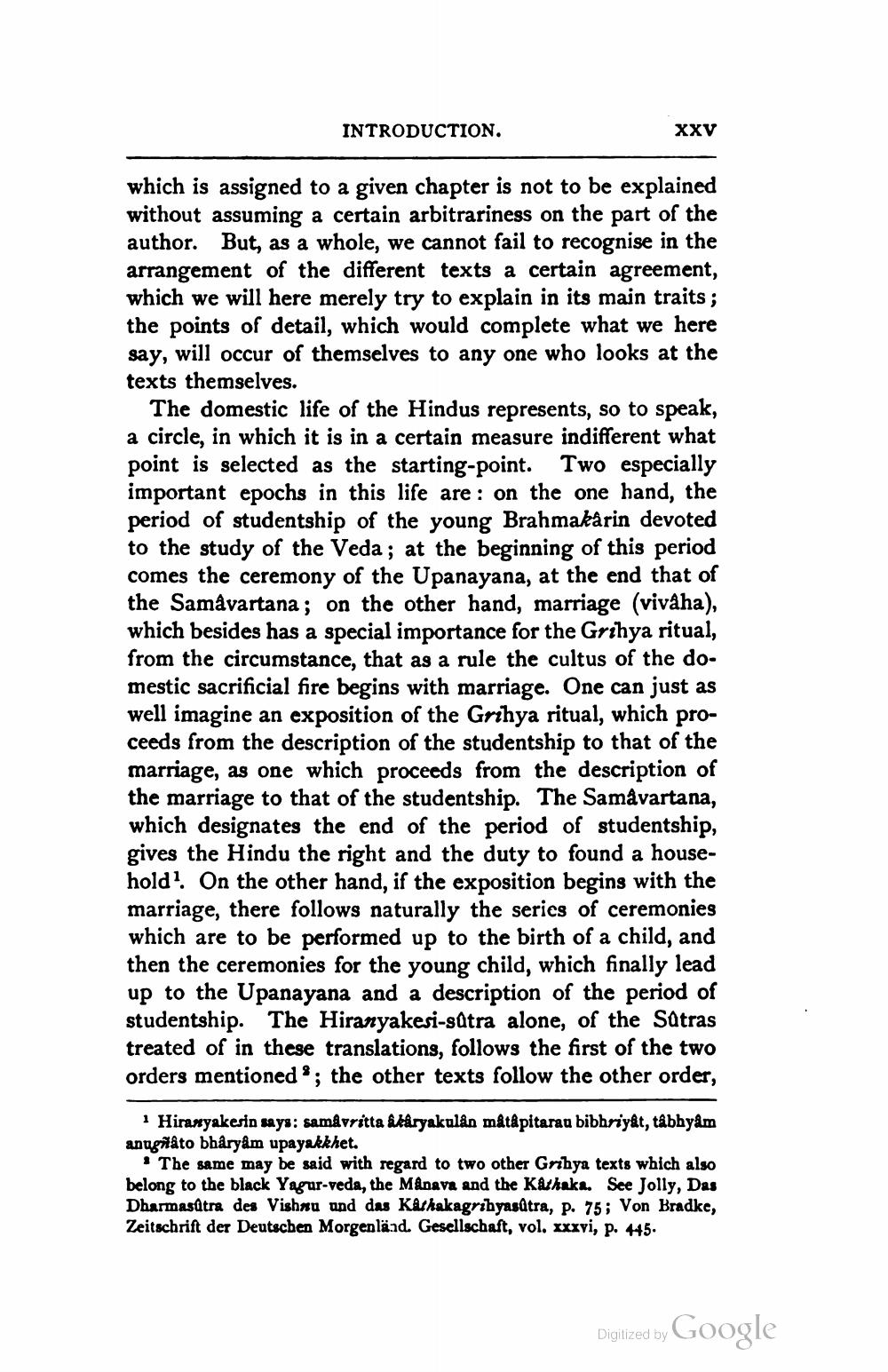________________
INTRODUCTION.
XXV
which is assigned to a given chapter is not to be explained without assuming a certain arbitrariness on the part of the author. But, as a whole, we cannot fail to recognise in the arrangement of the different texts a certain agreement, which we will here merely try to explain in its main traits; the points of detail, which would complete what we here say, will occur of themselves to any one who looks at the texts themselves.
The domestic life of the Hindus represents, so to speak, a circle, in which it is in a certain measure indifferent what point is selected as the starting-point. Two especially important epochs in this life are : on the one hand, the period of studentship of the young Brahmakärin devoted to the study of the Veda ; at the beginning of this period comes the ceremony of the Upanayana, at the end that of the Samávartana; on the other hand, marriage (vivaha), which besides has a special importance for the Grihya ritual, from the circumstance, that as a rule the cultus of the domestic sacrificial fire begins with marriage. One can just as well imagine an exposition of the Grihya ritual, which proceeds from the description of the studentship to that of the marriage, as one which proceeds from the description of the marriage to that of the studentship. The Samåvartana, which designates the end of the period of studentship, gives the Hindu the right and the duty to found a household?. On the other hand, if the exposition begins with the marriage, there follows naturally the series of ceremonies which are to be performed up to the birth of a child, and then the ceremonies for the young child, which finally lead up to the Upanayana and a description of the period of studentship. The Hiranyakesi-sútra alone, of the Satras treated of in these translations, follows the first of the two orders mentioned * ; the other texts follow the other order,
1 Hiranyakesin says: samkvritta & käryakulån måtâpitaran bibhriyat, tâbhyam anggråto bharyam upayakkhet.
The same may be said with regard to two other Gnihya texts which also belong to the black Yagar-veda, the Menava and the Kathaka. See Jolly, Das Dharmasútra des Vishnu und das Kathakagrihyasůtra, p. 75; Von Bradke, Zeitschrift der Deutschen Morgenlä.d. Gesellschaft, vol. xxxvi, p. 445.
Digilized by Google




